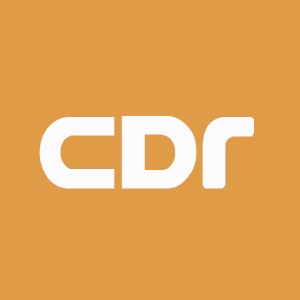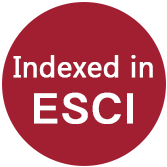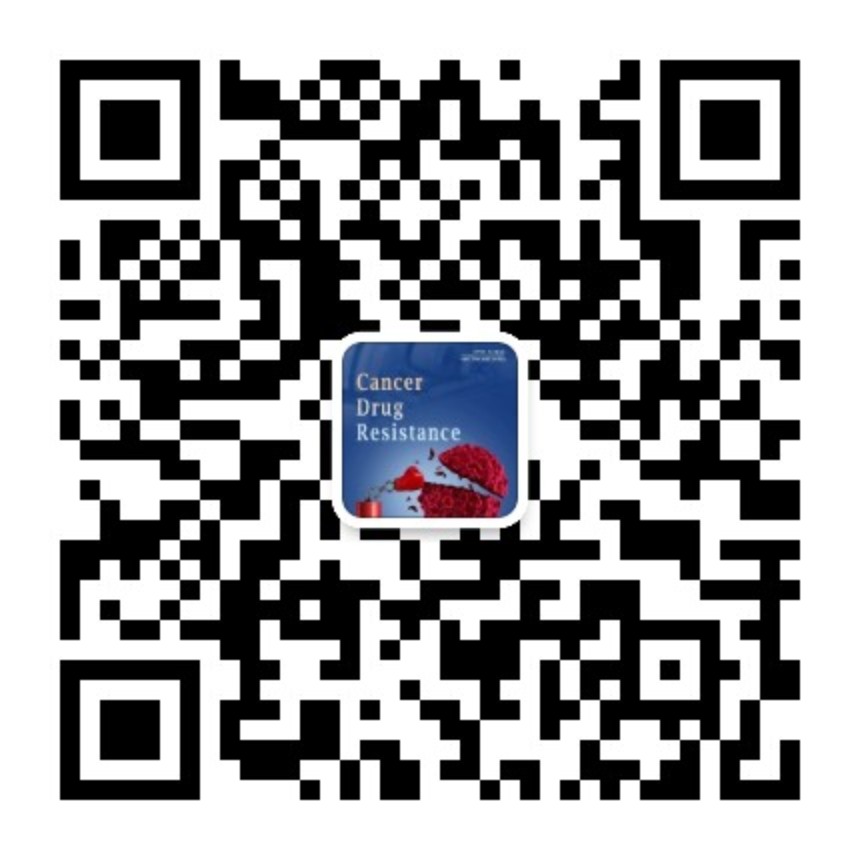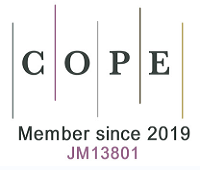REFERENCES
1. Pui CH, Mullighan CG, Evans WE, Relling MV. Pediatric acute lymphoblastic leukemia: where are we going and how do we get there? Blood 2012;120:1165-74.
2. Ronson A, Tvito A, Rowe JM. Treatment of relapsed/refractory acute lymphoblastic leukemia in adults. Curr Oncol Rep 2016;18:39.
3. Liu YF, Wang BY, Zhang WN, Huang JY, Li BS, et al. Genomic profiling of adult and pediatric B-cell acute lymphoblastic leukemia. EBioMedicine 2016;8:173-83.
4. Liu Y, Easton J, Shao Y, Maciaszek J, Wang Z, et al. The genomic landscape of pediatric and young adult T-lineage acute lymphoblastic leukemia. Nat Genet 2017;49:1211-8.
5. De Keersmaecker K, Atak ZK, Li N, Vicente C, Patchett S, et al. Exome sequencing identifies mutation in CNOT3 and ribosomal genes RPL5 and RPL10 in T-cell acute lymphoblastic leukemia. Nat Genet 2013;45:186-90.
6. Lugthart S, Cheok MH, den Boer ML, Yang W, Holleman A, et al. Identification of genes associated with chemotherapy crossresistance and treatment response in childhood acute lymphoblastic leukemia. Cancer Cell 2005;7:375-86.
7. Holleman A, Cheok MH, den Boer ML, Yang W, Veerman AJP, et al. Gene-expression patterns in drug-resistant acute lymphoblastic leukemia cells and response to treatment. N Engl J Med 2004;351:533-42.
8. Stam RW, Den Boer ML, Schneider P, de Boer J, Hagelstein J, et al. Association of high-level MCL-1 expression with in vitro and in vivo prednisone resistance in MLL-rearranged infant acute lymphoblastic leukemia. Blood 2010;115:1018-25.
9. Piovan E, Yu J, Tosello V, Herranz D, Ambesi-Impiombato A, et al. Direct reversal of glucocorticoid resistance by AKT inhibition in acute lymphoblastic leukemia. Cancer Cell 2013;24:766-76.
10. Li Y, Buijs-Gladdines JGCAM, Canté-Barrett K, Stubbs AP, Vroegindeweij EM, et al. IL-7 receptor mutations and steroid resistance in pediatric T cell acute lymphoblastic leukemia: a genome sequencing study. PLoS Med 2016;13:e1002200.
11. Bakker E, Qattan M, Mutti L, Demonacos C, Krstic-Demonacos M. The role of microenvironment and immunity in drug response in leukemia. Biochim Biophys Acta 2016;1863:414-26.
12. Konopleva M, Tabe Y, Zeng Z, Andreeff M. Therapeutic targeting of microenvironmental interactions in leukemia: mechanisms and approaches. Drug Resist Updat 2009;12:103-13.
13. Tavor S, Petit I. Can inhibition of the SDF-1/CXCR4 axis eradicate acute leukemia? Semin Cancer Biol 2010;20:178-85.
14. Konopleva MY, Jordan CT. Leukemia stem cells and microenvironment: biology and therapeutic targeting. Journal of clinical oncology 2011;29:591-9.
15. Manabe A, Coustan-Smith E, Behm FG, Raimondi SC, Campana D. Bone marrow-derived stromal cells prevent apoptotic cell death in B-lineage acute lymphoblastic leukemia. Blood 1992;79:2370-7.
16. Manabe A, Murti KG, Coustan-Smith E, Kumagai M, Behm FG, et al. Adhesion-dependent survival of normal and leukemic human B lymphoblasts on bone marrow stromal cells. Blood 1994;83:758-66.
18. Hsieh YT, Gang EJ, Geng H, Park E, Huantes S, et al. Integrin alpha4 blockade sensitizes drug resistant pre-B acute lymphoblastic leukemia to chemotherapy. Blood 2013;121:1814-8.
19. Shalapour S, Hof J, Kirschner-Schwabe R, Bastian L, Eckert C, et al. High VLA-4 expression is associated with adverse outcome and distinct gene expression changes in childhood B-cell precursor acute lymphoblastic leukemia at first relapse. Haematologica 2011;96:1627-35.
20. Shishido S, Bönig H, Kim YM. Role of integrin alpha4 in drug resistance of leukemia. Front Oncol 2014;4:99.
21. Bradstock K, Makrynikola V, Bianchi A, Byth K. Analysis of the mechanism of adhesion of precursor-B acute lymphoblastic leukemia cells to bone marrow fibroblasts. Blood 1993;82:3437-44.
22. Papayannopoulou T, Craddock C, Nakamoto B, Priestley GV, Wolf NS. The VLA4/VCAM-1 adhesion pathway defines contrasting mechanisms of lodgement of transplanted murine hemopoietic progenitors between bone marrow and spleen. Proc Natl Acad Sci USA 1995;92:9647-51.
23. Craddock CF, Nakamoto B, Elices M, Papayannopoulou Th. The role of CS1 moiety of fibronectin in VLA mediated haemopoietic progenitor trafficking. Br J Haematol 1997;97:15-21.
24. Mudry RE, Fortney JE, York T, Hall BM, Gibson LF. Stromal cells regulate survival of B-lineage leukemic cells during chemotherapy. Blood 2000;96:1926-32.
25. Sarkar S, Svoboda M, de Beaumont R, Freedman AS. The role of Aktand RAFTK in beta1 integrin mediated survival of precursor B-acute lymphoblastic leukemia cells. Leuk Lymphoma 2002;43:1663-71.
26. Astier AL, Xu R, Svoboda M, Hinds E, Munoz O, et al. Temporal gene expression profile of human precursor B leukemia cells induced by adhesion receptor: identification of pathways regulating B-cell survival. Blood 2003;101:1118-27.
27. Jacamo R, Chen Y, Wang Z, Ma W, Zhang M, et al. Reciprocal leukemia-stroma VCAM-1/VLA-4-dependent activation of NF-κB mediates chemoresistance. Blood 2014;123:2691-702.
28. Arcangeli A, Pillozzi S, Becchetti A. Targeting ion channels in leukemias: a new challenge for treatment. Curr Med Chem 2012;19:683-96.
29. Pillozzi S, Masselli M, De Lorenzo E, Accordi B, Cilia E, et al. Chemotherapy resistance in acute lymphoblastic leukemia requires hERG1 channels and is overcome by hERG1 blockers. Blood 2011;117:902-14.
30. Kapp TG, Rechenmacher F, Sobahi TR, Kessler H. Integrin modulators: a patent review. Expert Opin Ther Pat 2013;23:1273-95.
31. Hsieh YT, Gang EJ, Shishido SN, Kim HN, Pham J, et al. Effects of the small-molecule inhibitor of integrin α4, TBC3486, on pre-BALL cells. Leukemia 2014;28:2101-4.
32. Fagerholm SC, Varis M, Stefanidakis M, Hilden TJ, Gahmberg CG. Alpha-chain phosphorylation of the human leukocyte CD11b/CD18 (Mac-1) integrin is pivotal for integrin activation to bind ICAMs and leukocyte extravasation. Blood 2006;108:3379-86.
33. Rhein P, Mitlohner R, Basso G, Gaipa G, Dworzak MN, et al. CD11b is a therapy resistance- and minimal residual disease-specific marker in precursor B-cell acute lymphoblastic leukemia. Blood 2010;115:3763-71.
34. Naci D, El Azreq MA, Chetoui N, Lauden L, Sigaux F, et al. α2β1 integrin promotes chemoresistance against doxorubicin in cancer cells through extracellular signal-regulated kinase (ERK). J Biol Chem 2012;287:17065-76.
35. Angst BD, Marcozzi C, Magee AI. The cadherin superfamily: diversity in form and function. J Cell Sci 2001;114:629-41.
36. Heuberger J, Birchmeier W. Interplay of cadherin-mediated cell adhesion and canonical Wnt signaling. Cold Spring Harb Perspect Biol 2010;2:a002915.
37. Chae WJ, Bothwell ALM. Canonical and non-canonical wnt signaling in immune cells. Trends Immunol 2018;39:830-47.
38. Neumann M, Seehawer M, Schlee C, Vosberg S, Heesch S, et al. FAT1 expression and mutations in adult acute lymphoblastic leukemia. Blood Cancer J 2014;4:e224.
39. Morris LGT, Kaufman AM, Gong Y, Ramaswami D, Walsh LA, et al. Recurrent somatic mutation of FAT1 in multiple human cancers leads to aberrant Wnt activation. Nat Genet 2013;45:253-61.
40. Yang Y, Mallampati S, Sun B, Zhang J, Kim S-B, et al. Wnt pathway contributes to the protection by bone marrow stromal cells of acute lymphoblastic leukemia cells and is a potential therapeutic target. Cancer Lett 2013;333:9-17.
41. Hogan LE, Meyer JA, Yang J, Wang J, Wong N, et al. Integrated genomic analysis of relapsed childhood acute lymphoblastic leukemia reveals therapeutic strategies. Blood 2011;118:5218-26.
42. Dandekar S, Romanos-Sirakis E, Pais F, Bhatla T, Jones C, et al. Wnt inhibition leads to improved chemosensitivity in paediatric acute lymphoblastic leukaemia. Br J Haematol 2014;167:87-99.
43. de Bock CE, Ardjmand A, Molloy TJ, Bone SM, Johnstone D, et al. The Fat1 cadherin is overexpressed and an independent prognostic factor for survival in paired diagnosis-relapse samples of precursor B-cell acute lymphoblastic leukemia. Leukemia 2012;26:918-26.
44. de Bock CE, Down M, Baidya K, Sweron B, Boyd AW, et al. T-cell acute lymphoblastic leukemias express a unique truncated FAT1 isoform that cooperates with NOTCH1 in leukemia development. Haematologica 2019;104:e204-e207.
45. Yau T, Dan X, Ng CCW, Ng TB. Lectins with potential for anti-cancer therapy. Mol Basel Switz 2015;20:3791-810.
46. Thijssen VL, Heusschen R, Caers J, Griffioen AW. Galectin expression in cancer diagnosis and prognosis: a systematic review. Biochim Biophys Acta 2015;1855:235-47.
48. Yamamoto-Sugitani M, Kuroda J, Ashihara E, Nagoshi H, Kobayashi T, et al. Galectin-3 (Gal-3) induced by leukemia microenvironment promotes drug resistance and bone marrow lodgment in chronic myelogenous leukemia. Proc Natl Acad Sci USA 2011;108:17468-73.
49. Fei F, Abdel-Azim H, Lim M, Arutyunyan A, von Itzstein M, et al. Galectin-3 in pre-B acute lymphoblastic leukemia. Leukemia 2013;27:2385-8.
50. Fei F, Joo EJ, Tarighat SS, Schiffer I, Paz H, et al. B-cell precursor acute lymphoblastic leukemia and stromal cells communicate through Galectin-3. Oncotarget 2015;6:11378-94.
51. Hu K, Gu Y, Lou L, Liu L, Hu Y, et al. Galectin-3 mediates bone marrow microenvironment-induced drug resistance in acute leukemia cells via Wnt/β-catenin signaling pathway. J Hematol OncolJ Hematol Oncol 2015;8:1.
52. Ruvolo PP, Ruvolo VR, Benton CB, AlRawi A, Burks JK, et al. Combination of galectin inhibitor GCS-100 and BH3 mimetics eliminates both p53 wild type and p53 null AML cells. Biochim Biophys Acta 2016;1863:562-71.
53. Clark MC, Pang M, Hsu DK, Liu FT, de Vos S, et al. Galectin-3 binds to CD45 on diffuse large B-cell lymphoma cells to regulate susceptibility to cell death. Blood 2012;120:4635-44.
54. Streetly MJ, Maharaj L, Joel S, Schey SA, Gribben JG, et al. GCS-100, a novel galectin-3 antagonist, modulates MCL-1, NOXA, and cell cycle to induce myeloma cell death. Blood 2010;115:3939-48.
55. Chauhan D, Li G, Podar K, Hideshima T, Neri P, et al. A novel carbohydrate-based therapeutic GCS-100 overcomes bortezomib resistance and enhances dexamethasone-induced apoptosis in multiple myeloma cells. Cancer Res 2005;65:8350-8.
56. Nwabo Kamdje AH, Krampera M. Notch signaling in acute lymphoblastic leukemia: any role for stromal microenvironment? Blood 2011;118:6506-14.
57. Li X, von Boehmer H. Notch signaling in T-Cell development and T-ALL. ISRN Hematol 2011;2011:921706.
58. Schmitt TM, Zúñiga-Pflücker JC. Induction of T cell development from hematopoietic progenitor cells by delta-like-1 in vitro. Immunity 2002;17:749-56.
59. Siebel C, Lendahl U. Notch signaling in development, tissue homeostasis, and disease. Physiol Rev 2017;97:1235-94.
60. Harrison JS, Rameshwar P, Chang V, Bandari P. Oxygen saturation in the bone marrow of healthy volunteers. Blood 2002;99:394.
62. Sahlgren C, Gustafsson MV, Jin S, Poellinger L, Lendahl U. Notch signaling mediates hypoxia-induced tumor cell migration and invasion. Proc Natl Acad Sci USA 2008;105:6392-7.
63. Zou J, Li P, Lu F, Liu N, Dai J, et al. Notch1 is required for hypoxia-induced proliferation, invasion and chemoresistance of T-cell acute lymphoblastic leukemia cells. J Hematol OncolJ Hematol Oncol 2013;6:3.
64. Takebe N, Nguyen D, Yang SX. Targeting notch signaling pathway in cancer: clinical development advances and challenges. Pharmacol Ther 2014;141:140-9.
65. Takam Kamga P, Dal Collo G, Midolo M, Adamo A, Delfino P, et al. Inhibition of notch signaling enhances chemosensitivity in B-cell precursor acute lymphoblastic leukemia. Cancer Res 2019;79:639-49.
66. Nwabo Kamdje AH, Mosna F, Bifari F, Lisi V, Bassi G, et al. Notch-3 and Notch-4 signaling rescue from apoptosis human B-ALL cells in contact with human bone marrow-derived mesenchymal stromal cells. Blood 2011;118:380-9.
67. Meng X, Matlawska-Wasowska K, Girodon F, Mazel T, Willman CL, et al. GSI-I (Z-LLNle-CHO) inhibits γ-secretase and the proteosome to trigger cell death in precursor-B acute lymphoblastic leukemia. Leukemia 2011;25:1135-46.
68. DeAngelo DJ, Stone RM, Silverman LB, Stock W, attar EC, et al. A phase I clinical trial of the notch inhibitor MK-0752 in patients with T-cell acute lymphoblastic leukemia/lymphoma (T-ALL) and other leukemias. Journal of Clinical Oncology 2006;24:6585-6585.
69. Real PJ, Tosello V, Palomero T, Castillo M, Hernando E, et al. Gamma-secretase inhibitors reverse glucocorticoid resistance in T cell acute lymphoblastic leukemia. Nat Med 2009;15:50-8.
70. Balkwill F. TNF-alpha in promotion and progression of cancer. Cancer Metastasis Rev 2006;25:409-16.
71. Riether C, Schürch CM, Ochsenbein AF. Regulation of hematopoietic and leukemic stem cells by the immune system. Cell Death Differ 2015;22:187-98.
72. Warzocha K, Bienvenu J, Ribeiro P, Moullet I, Dumontet C, et al. Plasma levels of tumour necrosis factor and its soluble receptors correlate with clinical features and outcome of Hodgkin’s disease patients. Br J Cancer 1998;77:2357-62.
73. Warzocha K, Ribeiro P, Bienvenu J, Roy P, Charlot C, et al. Genetic polymorphisms in the tumor necrosis factor locus influence non-Hodgkin’s lymphoma outcome. Blood 1998;91:3574-81.
74. Lauten M, Matthias T, Stanulla M, Beger C, Welte K, et al. Association of initial response to prednisone treatment in childhood acute lymphoblastic leukaemia and polymorphisms within the tumour necrosis factor and the interleukin-10 genes. Leukemia 2002;16:1437-42.
75. Gu L, Findley HW, Zhu N, Zhou M. Endogenous TNFalpha mediates cell survival and chemotherapy resistance by activating the PI3K/Akt pathway in acute lymphoblastic leukemia cells. Leukemia 2006;20:900-4.
76. Lin JX, Leonard WJ. The common cytokine receptor γ chain family of cytokines. Cold Spring Harb Perspect Biol 2018;10:a028449.
77. Zubiaga AM, Munoz E, Huber BT. IL-4 and IL-2 selectively rescue Th cell subsets from glucocorticoid-induced apoptosis. J Immunol Baltim Md 1992;149:10712.
78. Kam JC, Szefler SJ, Surs W, Sher ER, Leung DY. Combination IL-2 and IL-4 reduces glucocorticoid receptor-binding affinity and T cell response to glucocorticoids. J Immunol Baltim Md 1993;151:3460-6.
79. Serafin V, Capuzzo G, Milani G, Minuzzo SA, Pinazza M, et al. Glucocorticoid resistance is reverted by LCK inhibition in pediatric T-cell acute lymphoblastic leukemia. Blood 2017;130:2750-61.
80. McCarty JM, Yee EK, Deisher TA, Harlan JM, Kaushansky K. Interleukin-4 induces endothelial vascular cell adhesion molecule-1 (VCAM-1) by an NF-kappa b-independent mechanism. FEBS Lett 1995;372:194-8.
81. Juneja HS, Schmalsteig FC, Lee S, Chen J. Vascular cell adhesion molecule-1 and VLA-4 are obligatory adhesion proteins in the heterotypic adherence between human leukemia/lymphoma cells and marrow stromal cells. Exp Hematol 1993;21:444-50.
82. Mazzucchelli R, Durum SK. Interleukin-7 receptor expression: intelligent design. Nat Rev Immunol 2007;7:144-54.
83. Ashwell JD, King LB, Vacchio MS. Cross-talk between the T cell antigen receptor and the glucocorticoid receptor regulates thymocyte development. Stem Cells Dayt Ohio 1996;14:490-500.
84. Delgado-Martin C, Meyer LK, Huang BJ, Shimano KA, Zinter MS, et al. JAK/STAT pathway inhibition overcomes IL7-induced glucocorticoid resistance in a subset of human T-cell acute lymphoblastic leukemias. Leukemia 2017;31:2568.
85. Meyer LK, Huang B, Roy R, Hechmer A, Anica M, et al. Glucocorticoids paradoxically induce intrinsic steroid resistance through a STAT5-mediated survival mechanism in T-cell acute lymphoblastic Leukemia. Blood 2018;132:913.
86. Ray RJ, Furlonger C, Williams DE, Paige CJ. Characterization of thymic stromal-derived lymphopoietin (TSLP) in murine B cell development in vitro. Eur J Immunol 1996;26:10-6.
87. Roberts KG, Morin RD, Zhang J, Hirst M, Zhao Y, et al. Genetic alterations activating kinase and cytokine receptor signaling in high-risk acute lymphoblastic leukemia. Cancer Cell 2012;22:153-66.
88. Harvey RC, Mullighan CG, Chen IM, Wharton W, Mikhail FM, et al. Rearrangement of CRLF2 is associated with mutation of JAK kinases, alteration of IKZF1, hispanic/latino ethnicity, and a poor outcome in pediatric B-progenitor acute lymphoblastic leukemia. Blood 2010;115:5312-21.
89. Meyer LK, Delgado-Martin C, Maude SL, Teachey DT, Hermiston ML. CRLF2 rearrangement status in ph-like all predicts intrinsic glucocorticoid resistance in vitro that is reversible with targeted MAPK and PI3K pathway inhibition. Blood 2016; doi: 10.1182/blood.V128.22.910.910.
90. Cramer SD, Aplan PD, Durum SK. Therapeutic targeting of IL-7Rα signaling pathways in ALL treatment. Blood 2016;128:473-8.
91. Maude SL, Dolai S, Delgado-Martin C, Vincent T, Robbins A, et al. Efficacy of JAK/STAT pathway inhibition in murine xenograft models of early T-cell precursor (ETP) acute lymphoblastic leukemia. Blood 2015;125:1759-67.
92. Maude SL, Tasian SK, Vincent T, Hall JW, Sheen C, et al. Targeting JAK1/2 and mTOR in murine xenograft models of ph-like acute lymphoblastic leukemia. Blood 2012;120:3510-8.
93. Sokol CL, Luster AD. The chemokine system in innate immunity. Cold Spring Harb Perspect Biol 2015; doi: 10.1101/cshperspect.a016303.
94. Pozzobon T, Goldoni G, Viola A, Molon B. CXCR4 signaling in health and disease. Immunol Lett 2016;177:6-15.
95. Gachet S, Genescà E, Passaro D, Irigoyen M, Alcalde H, et al. Leukemia-initiating cell activity requires calcineurin in T-cell acute lymphoblastic leukemia. Leukemia 2013;27:2289-300.
96. Passaro D, Irigoyen M, Catherinet C, Gachet S, Da Costa De Jesus C, et al. CXCR4 is required for leukemia-initiating cell activity in T cell acute lymphoblastic leukemia. Cancer Cell 2015;27:769-79.
97. van den Berk LCJ, van der Veer A, Willemse ME, Theeuwes MJGA, Luijendijk MW, et al. Disturbed CXCR4/CXCL12 axis in paediatric precursor B-cell acute lymphoblastic leukaemia. Br J Haematol 2014;166:240-9.
98. Konoplev S, Jorgensen JL, Thomas DA, Lin E, Burger J, et al. Phosphorylated CXCR4 is associated with poor survival in adults with B-acute lymphoblastic leukemia. Cancer 2011;117:4689-95.
99. Sison EAR, Rau RE, McIntyre E, Li L, Small D, et al. MLL-rearranged acute lymphoblastic leukaemia stem cell interactions with bone marrow stroma promote survival and therapeutic resistance that can be overcome with CXCR4 antagonism. Br J Haematol 2013;160:78597.
100. Sison EAR, Magoon D, Li L, Annesley CE, Rau RE, et al. Plerixafor as a chemosensitizing agent in pediatric acute lymphoblastic leukemia: efficacy and potential mechanisms of resistance to CXCR4 inhibition. Oncotarget 2014;5:8947-58.
101. Cooper TM, Sison EAR, Baker SD, Li L, Ahmed A, et al. A phase 1 study of the CXCR4 antagonist plerixafor in combination with high-dose cytarabine and etoposide in children with relapsed or refractory acute leukemias or myelodysplastic syndrome: a pediatric oncology experimental therapeutics investigators’ consortium study (POE 10-03). Pediatr Blood Cancer 2017;64:e26414.
102. Pieters R, Hunger SP, Boos J, Rizzari C, Silverman L, et al. L-asparaginase treatment in acute lymphoblastic leukemia: a focus on Erwinia asparaginase. Cancer 2011;117:238-49.
103. Kumar K, Kaur J, Walia S, Pathak T, Aggarwal D, et al. L-asparaginase: an effective agent in the treatment of acute lymphoblastic leukemia. Leuk Lymphoma 2014;55:256-62.












